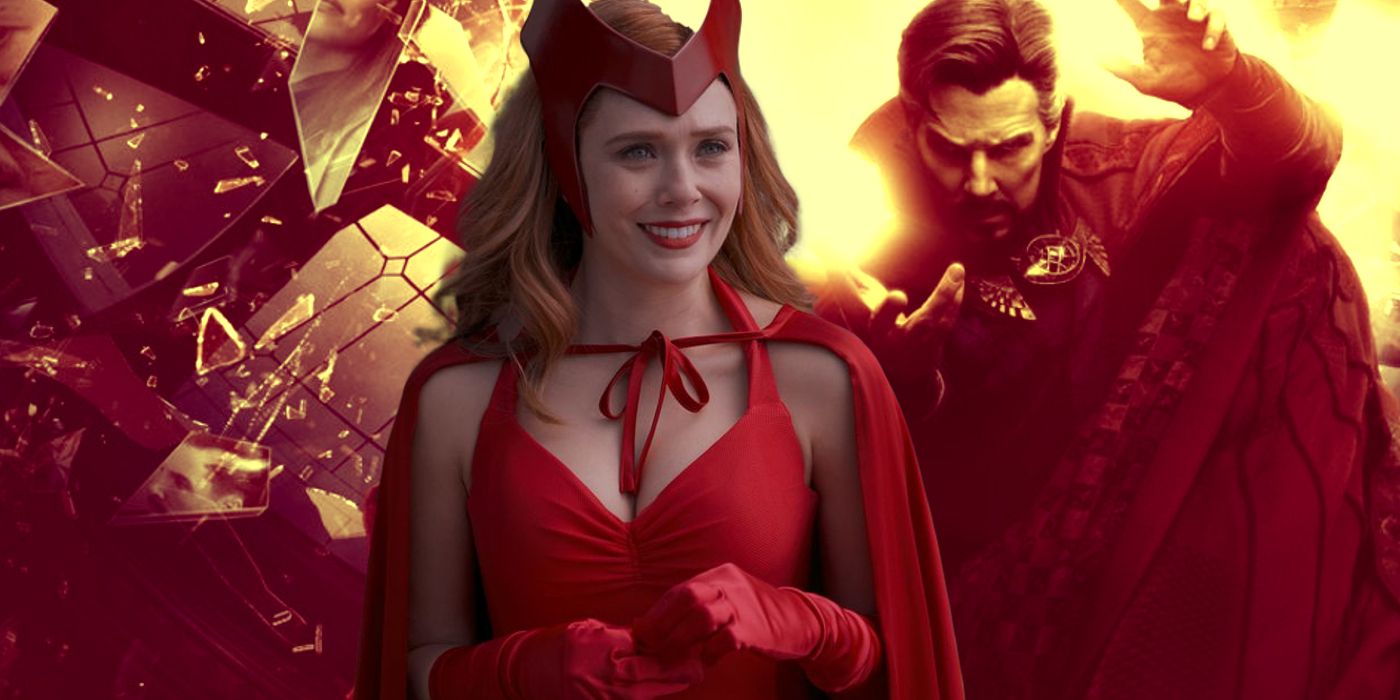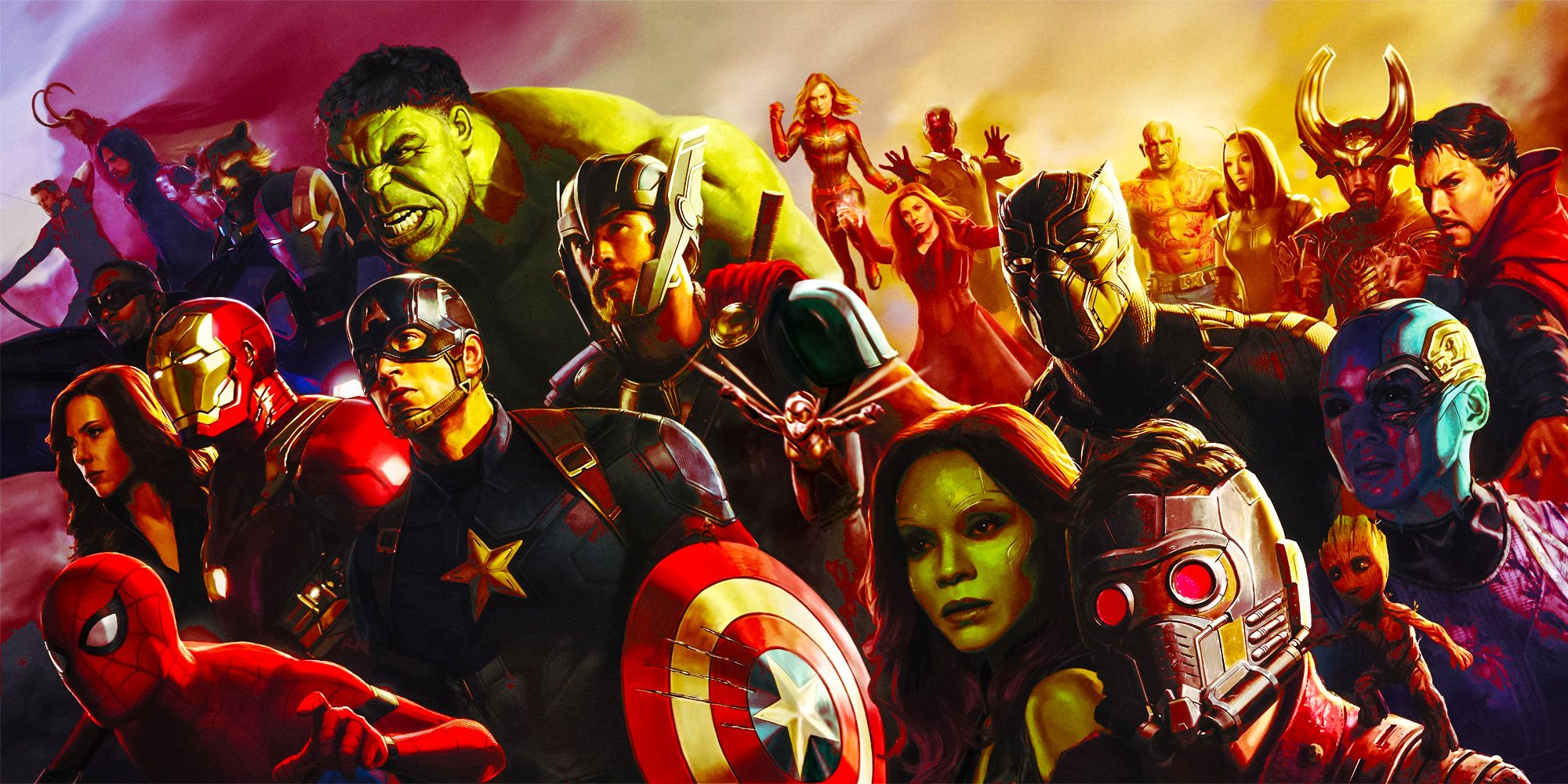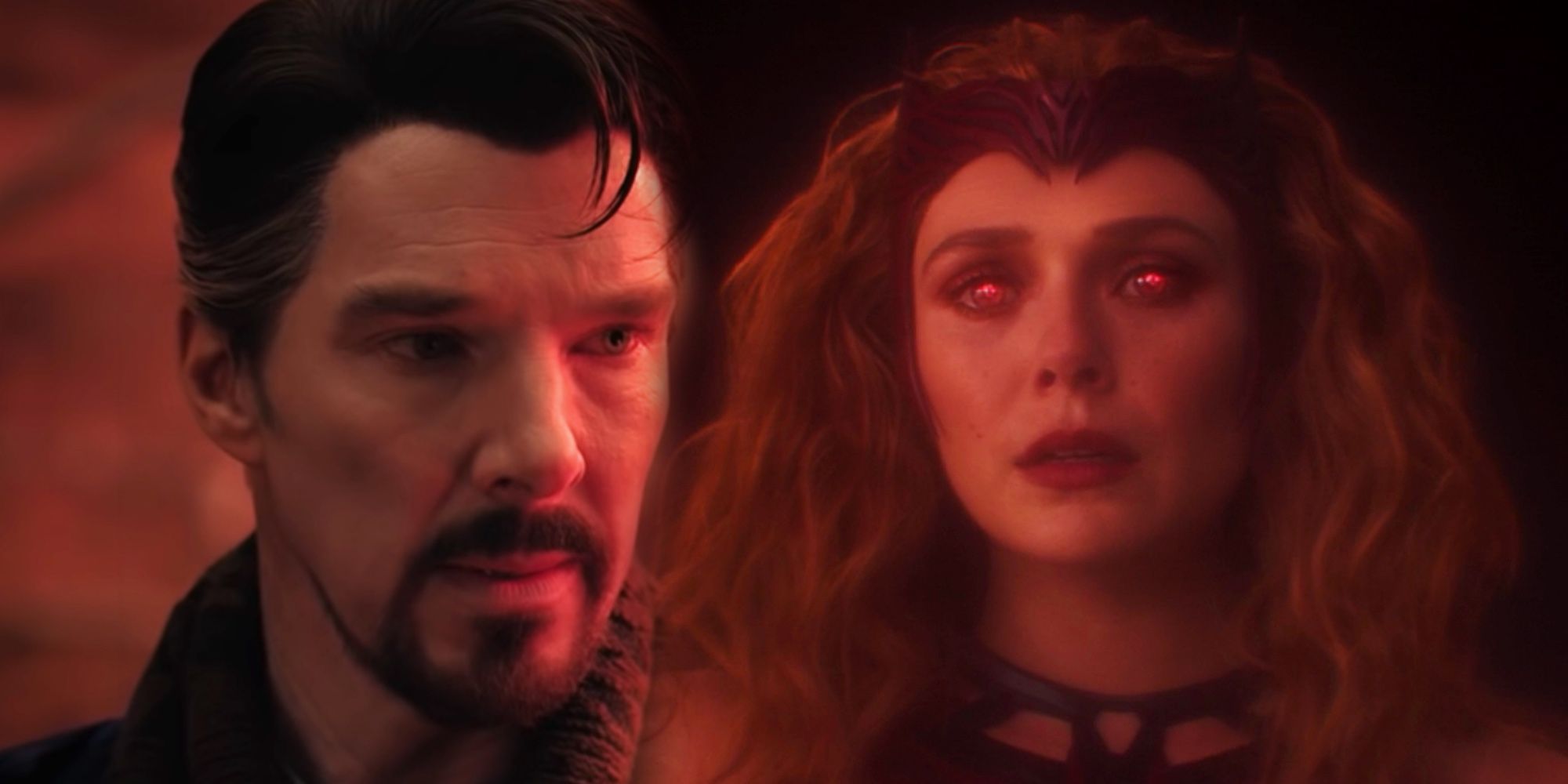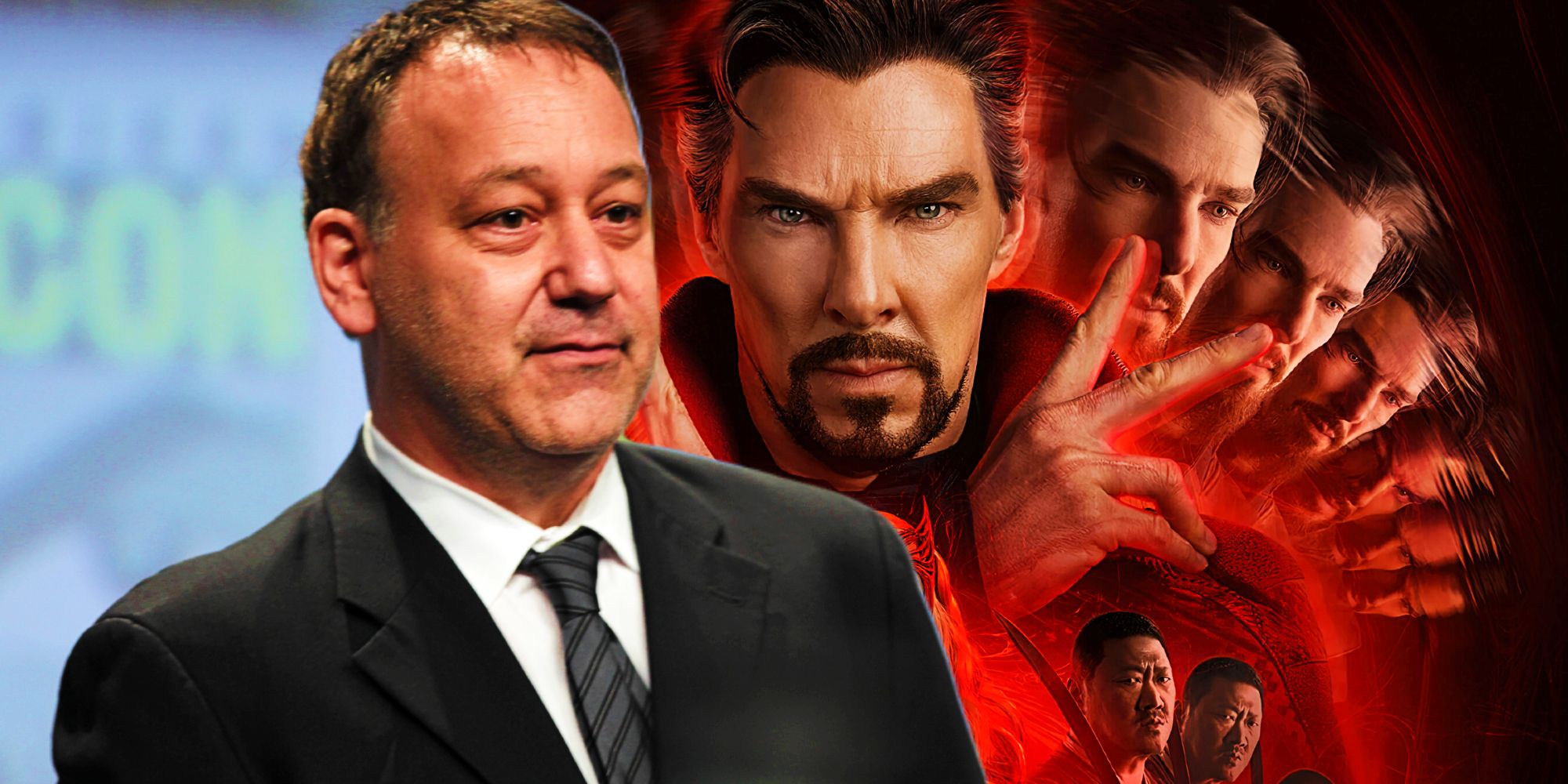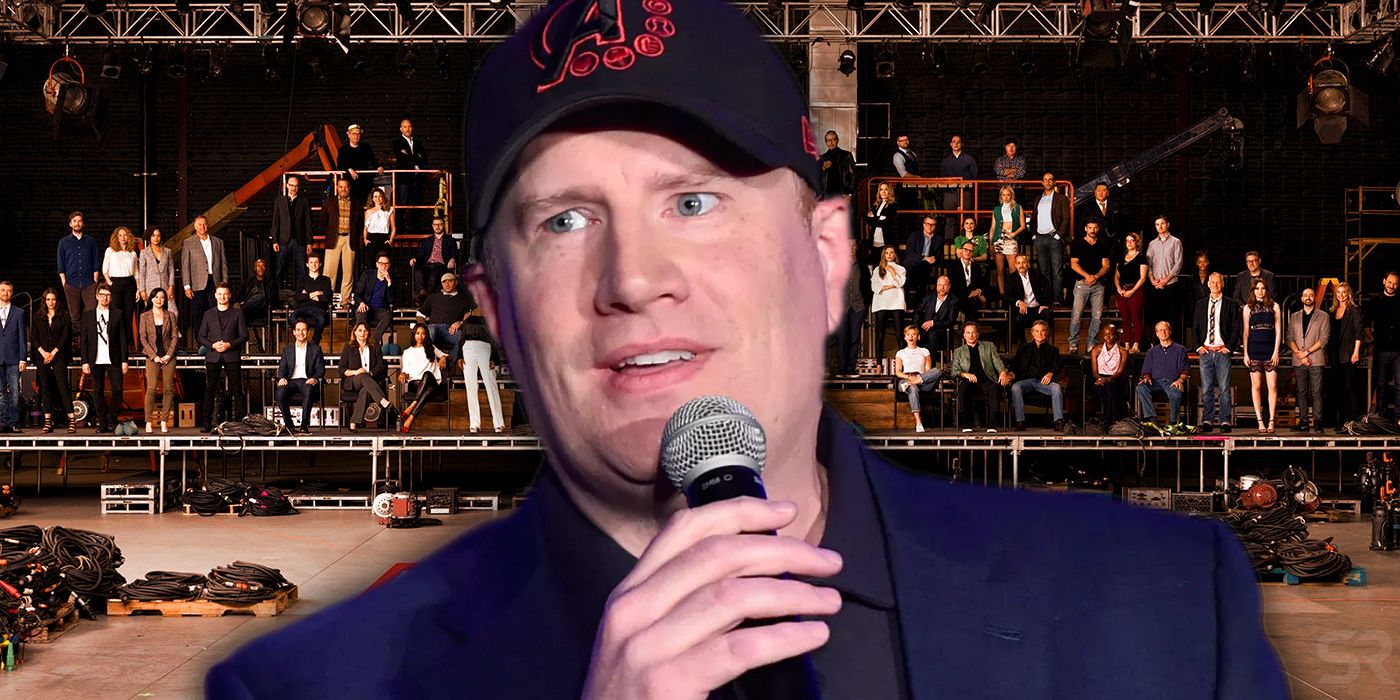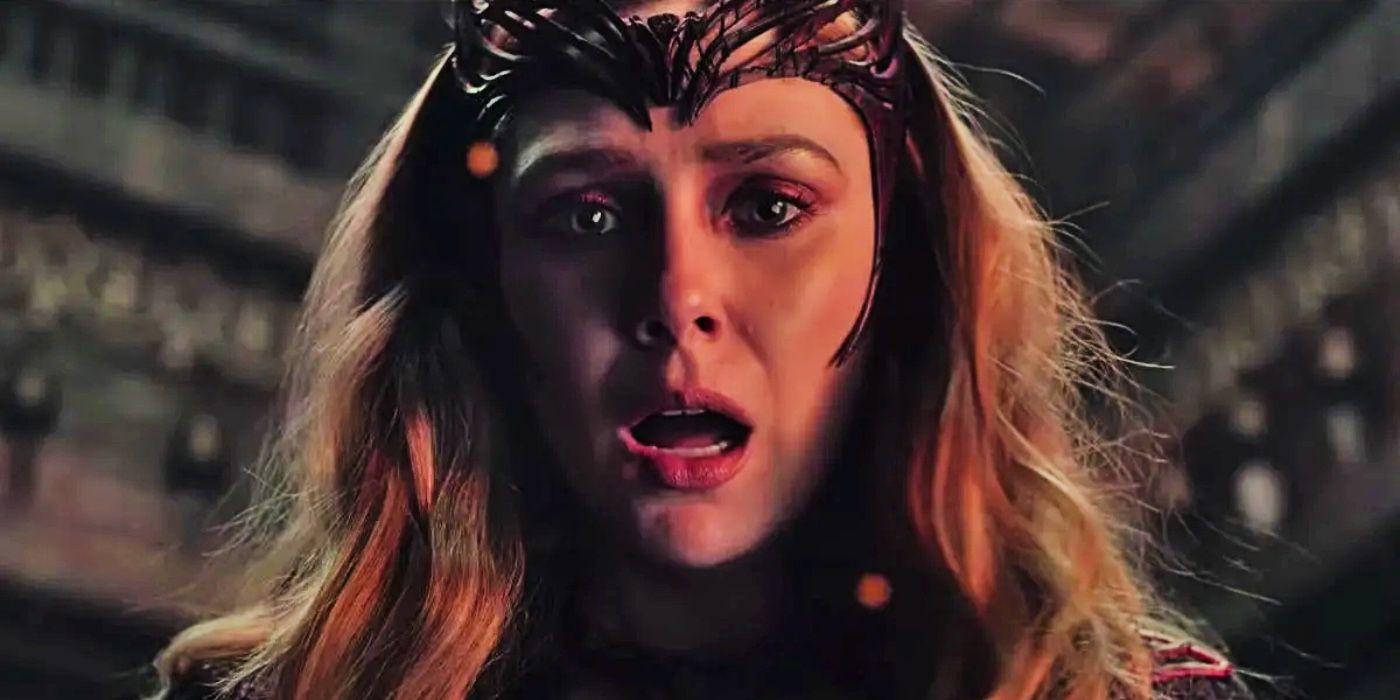This article contains spoilers for Doctor Strange in the Multiverse of Madness.
Doctor Strange in the Multiverse of Madness transformed Scarlet Witch into a villain, retconning WandaVision's post-credits scene - and proving Kevin Feige's claim about an MCU masterplan is exaggerated. Wanda Maximoff's heel-turn in Doctor Strange in the Multiverse of Madness is undoubtedly one of the most dramatic twists in the MCU's ongoing narrative to date. The Avenger defended by Steve Rogers, triggerer of the Sokovia Accords and the superhero Civil War, launched a rampage across the multiverse.
There's always been an obvious link between Scarlet Witch's powers and her emotional state; Quicksilver's death prompted a particularly destructive energy blast in Avengers: Age of Ultron, while her grief and rage made her the one Avenger to almost defeat Thanos in Avengers: Endgame. But Phase 4 has taken this one step further, with grief and loss essentially becoming both Wanda's own greatest enemy and the key to unlocking her power. In WandaVision, her heartache and pain unlocked the power of Chaos Magic, allowing Scarlet Witch to rewrite reality around the town of Westview in an attempt to create her own personal "Happily Ever After." This taste of happiness tragically broke Wanda, with the Darkhold's baleful influence corrupting her.
At first glance, then, there seems to be a narrative throughline between WandaVision and Doctor Strange 2. Unfortunately, on closer examination, there's actually a clear discontinuity on the most basic level; WandaVision treats Scarlet Witch as a hero who has been broken by trauma and is struggling to piece herself back together, while Doctor Strange in the Multiverse of Madness views her as an uncompromising villain whose idea of being "reasonable" is sending monsters and demons to hunt a teenager across the multiverse. In theory, this is explained through the idea Wanda has been corrupted by the Darkhold, but the transition is still quite jarring. It also fundamentally challenges a central claim to the MCU - that everything is always planned out years in advance.
The MCU Is Built On The Idea Of Kevin Feige's Masterplan
The MCU is built on the idea of a "masterplan," that everything is intimately connected and films are planned out years - even decades - in advance. It's easy to see how the idea has taken hold; Iron Man's post-credits scene is unarguably the beginning of setup for The Avengers, after all, and The Avengers' post-credits scene set up Thanos as the main villain of Phases 1-3. In 2014, Marvel Studios announced their entire Phase 3 slate, running all the way up to 2019; while there's nothing new to studios making announcements that run five years ahead, in this case there was a remarkably clear sense of direction.
Marvel Studios President Kevin Feige has encouraged the idea that there's always a plan in the works. He claims Marvel's plan runs over a decade, meaning the studio's decision-makers are discussing ideas that won't come to pass until 2032. The idea of a master plan has actually become a major part of Marvel's marketing, because viewers are encouraged to consume every piece of content as part of a single ongoing narrative, a story that's headed in a specific direction that they are encouraged to try to figure out. This is even more important in Phase 4, where the MCU is trying to morph into a true transmedia franchise, where both the films and Disney+ TV shows are equally important to the franchise's story. The close connections between WandaVision and Doctor Strange in the Multiverse of Madness are really something of an acid test for the claim that "it's all connected" and everything matters.
How Doctor Strange 2 Retcons WandaVision
WandaVision's post-credit scene is the clearest setup for Doctor Strange 2 - but unfortunately, there are clear points of conflict. The most notable is the fact that WandaVision shows Scarlet Witch in a remote mountain location, relaxing in a cabin while her astral self reads the Darkhold. But when Doctor Strange visits her in Doctor Strange 2's opening scene, Wanda is in a completely different location - one she has clearly devastated with her Chaos Magic, with the destruction concealed due to another Hex. What's more, although Wanda may have been reading the Darkhold in WandaVision's post-credits, there's no visible sign of its corrupting influence; there are none of the black stains spreading across her costume.
The problems are compounded when Scarlet Witch heads to Mount Wundagore. According to Doctor Strange in the Multiverse of Madness, the Darkhold was copied from the walls of Mount Wundagore; when Wanda enters one chamber, she sees a statue of herself as Scarlet Witch, almost perfectly corresponding with the pages of the Darkhold seen in WandaVision. There's one notable difference, though; Wanda's children are featured among the statues on Mount Wundagore as well, but aren't there on the relevant page of the Darkhold. These small details may seem minor, but they are significant in a shared universe that markets itself on a long-term, detailed plan. They clue viewers in that it's worth questioning the plan, and looking for further discontinuities.
In truth, there is a profound difference between how WandaVision and Doctor Strange 2 treat Scarlet Witch. WandaVision saw itself as the origin story of the Scarlet Witch, but it clearly imagined her to be a hero because she had worked through her trauma and grief. "It was extremely important to me that we not do the lazy thing of having a superpower lady who can't handle her powers and goes crazy," WandaVision showrunner Jac Schaeffer told GamesRadar. Doctor Strange 2 turned this upside-down, revealing Wanda had not even begun to process her trauma, and it basically told the story Schaeffer criticized as "lazy."
Sam Raimi & Michael Waldron Forced Doctor Strange 2 Direction Change
All this clearly signposts a major change in Marvel's plans for Scarlet Witch - and it's actually possible to figure out when it happened. Marvel originally intended to begin production on Doctor Strange in the Multiverse of Madness in early 2020, but in January of that year both director Scott Derrickson and writer C. Robert Cargill left due to unspecified creative differences. Surprisingly, speaking to CinemaBlend over a year later, Cargill revealed there was never a full draft of his script; he had apparently only written a few pages outlining where he wanted the story to go, and these had only been shown to Derrickson. Clearly, pre-production on Doctor Strange 2 had stalled long before Derrickson and Cargill left; they were subsequently replaced by Sam Raimi and Michael Waldron, who worked on a new script.
There are abundant signs of a change in direction at this point. The most telling is the fact that Rachel McAdams was not originally expected to join the cast of Doctor Strange 2 during Derrickson's time as director, but Strange's unrequited love for her character became a major arc in the final theatrical cut. Most striking of all, in a recent interview with Variety, Elizabeth Olsen revealed she only found out she was becoming a villain while WandaVision was still in production - possibly as late as October or November 2020. "I thought I was gonna be, like, in an ensemble thing," she admitted. "So at first I think I was nervous and conflicted, because I hadn’t finished WandaVision yet, but we were almost finished." If Marvel had really been intending Wanda to become a villain all along, then the cast and production team of WandaVision would surely have been in the loop.
Doctor Strange 2 Proves Kevin Feige's MCU Lie
Scarlet Witch's direction proves Marvel's MCU masterplan isn't as solid as Kevin Feige likes to claim. The studio likely has an overarching sense of direction, but there's a degree of flexibility built into it, with Marvel capable of course-corrections based on audience reactions or simply because new ideas come up; Ant-Man & the Wasp wasn't part of the original Phase 3 slate, but was incorporated into it because Marvel was happy with Ant-Man's performance and saw the need for exploring the Quantum Realm in greater detail as they locked in on the plot of Avengers: Endgame.
Speaking at the Sands International Film Festival of St. Andrews in Scotland, Joe Russo - one of Marvel's highest-profile directors in Phases 2 and 3 - actually discussed Marvel's loose, flexible planning as the secret to their success. "Part of Kevin [Feige]'s brilliance is that there isn’t really a plan," he explained. "There's an idea, but you can't have a plan if the movie you’re making tanks... And there was hopes. Oh, we hope one day that we can get to the story, if we keep doing this right maybe we could all get there, you know, like Infinity War and Endgame. But a lot of the stuff was made up in between the movies." This is the true approach that served Marvel so well in Phases 1-3, and it's clearly the approach they're sticking with in Phase 4.
Are MCU Retcons A Problem?
All this naturally raises the simple question of whether MCU retcons and changes of plan are a problem. There's actually good reason to be glad the MCU doesn't operate to some fixed and inflexible masterplan, with directors and actors simply performing according to Kevin Feige's vision; such an approach would be singularly lacking in creativity. It would lead to an MCU where everything was the same in tone and style, where writers and directors had no freedom, where ideas were quashed because - however good they may be in the short-term - they didn't fit with something else planned to happen in two years' time. The benefit of the true Marvel Studios approach is perfectly demonstrated in Doctor Strange in the Multiverse of Madness, which bears all the hallmarks of Sam Raimi just as much as it does the MCU.
The issue, however, is that the MCU is effectively being mis-sold. Viewers are being encouraged to view the MCU as one overarching narrative, headed towards a set destination, when in reality it is in flux. At times this leads to clear discontinuities - as in the case of Scarlet Witch, whose character arc doesn't run consistently from WandaVision to Doctor Strange in the Multiverse of Madness. Occasionally, it even leads to mistakes; it's hard not to see Wanda's final direction as something of a disappointment, a waste of her potential, after the audience reaction to her in WandaVision. Marvel needs to start being honest about their modus operandii - freeing audiences up to discuss the MCU as it really is, not as it pretends to be.

